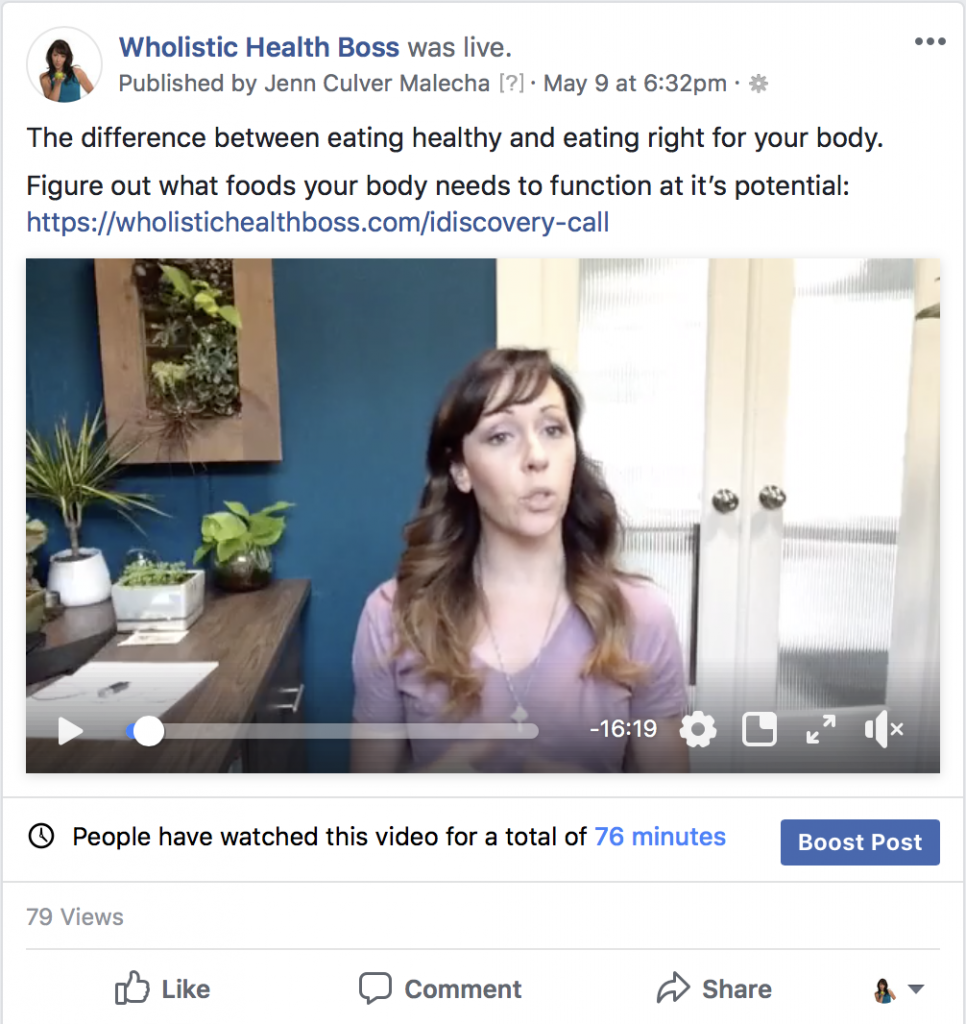What foods are right for you?
Did you know there is a difference between eating healthy and eating right for your body?
Eating right for your body will include healthy foods, but not all healthy foods are right for your body.
What makes a food “healthy” anyways?
According to the dictionary, the word “healthy” means…
“in good health.: “I feel fit and healthy” “the family is the basis of any healthy society”.
So how does that apply to food then?
We tend to lump a bunch of foods under the definition of healthy – ones that we’ve been told are healthy because of certain nutritional values they hold. “Healthy” foods tend to be: high in vitamins and minerals, low in calories and sugar, and great sources of fiber and healthy fats according to who ever makes up these standards around healthy foods.
I think most of us would agree that these foods would fall under the definition of healthy because of their nutritional value…
- Organic vegetables
- Organic fruits
- Organic meats, poultry and fish
- Organic nuts, seeds, beans and legumes
Yet, not all of the foods in these categories are right for my body and they may not be right for yours either.
Last week I was reminded of this lesson when I ate something that appeared to be healthy on the outside but wasn’t quite right for my body on the inside.
Check out the Facebook Live Video where I share my experience, the friendly reminders my body gave me and how to know what healthy foods may not be right for you…
From the outside the food that I ate last week looked super healthy. It had clean ingredients, it was certified gluten free, Paleo, vegan, Whole30 approved and all that jazz.
Initially after eating this apparently healthy food for dinner, I felt fine. But the next morning was a different story. My body gave me all kinds of signs that this apparently healthy food, or combination of ingredients was not working for me.
After being diagnosed with Hashimoto’s in 2016 I started eating a modified Autoimmune Paleo (AIP) diet to reduce inflammation, lower my thyroid antibodies and to allow my body to heal. After about 3 months my antibodies were down, I had lost some weight, I was feeling great and I was able to reintroduce some foods I had been avoiding.
Upon reintroducing foods, I quickly realized that some of the healthy foods I used to eat, such as bell peppers, chia seeds and walnuts, didn’t agree with me although they are “healthy”. Over time, as my gut has healed more, I’ve been able to add certain foods back in small amounts while still feeling great BUT red bell peppers and chia seeds still aren’t my friends.
I was able to figure this out by simply paying attention to how my body responded to certain foods and by using functional lab testing to identify what foods my body needs to function at its potential.
If you feel as though you “eat healthy” but aren’t getting the results you want, have tried every diet and they don’t work, or just plain stuck when it comes to losing weight or improving your health, then it’s likely because there is a difference between eating healthy and eating right for your body.
You could be eating the healthiest foods in the world BUT if they aren’t right for you, you won’t get the results you are looking for.
To figure out what foods are right for you…
1 – Tune Into Your Body
Often we are eating on autopilot and not recognizing or connecting with how foods make us feel. Reactions to foods can happen immediately or be delayed for as long as 72 hours. Reactions to foods can show up in various ways – not just as digestive upset. Check in with yourself 30 minutes to 2 hours after eating a meal to assess your mood, energy and how your physical body feels. If you feel anxious, tired, bloated, gassy or just “off”, this could be a result of something you ate.
These same symptoms can also show up over the course of 3 days after eating something that doesn’t agree with you. If I get “glutened” (secretly slipped some wheat) then I’m guaranteed to have anxiety for the next day or two.
Other signs of food reactions can also include: acne, eczema, psoriasis, irregular menstrual cycles, joint aches and pains, issues sleeping and more! If your symptoms come and go, start tracking them along with what you ate and see what you can correlate!
2 – Test Don’t Guess
Tuning into your body to find out what foods serve you best is the key, but sometimes the signs may not be super clear. Food sensitivity testing can pinpoint exactly what foods your body is reacting to so you can take empowered action to support your body with the foods you need.
Generally, food sensitivities are a result of having a leaky gut and they only need to be avoided for a period of time to help the gut heal. Once your gut is in a better place, you can retest your food sensitivities to see which ones have improved for those that can be added back in, and which ones still might not be right for your body.
Don’t be fooled by “eating healthy.”
Simply eat right for your body, and take the time to understand what healthy means for you.
If you want to figure out what foods ARE right for your body, OR how to heal your gut so you can enjoy some of your favorite foods again, then schedule a complimentary Ideal Health & Weight Discovery Session with me here today!

